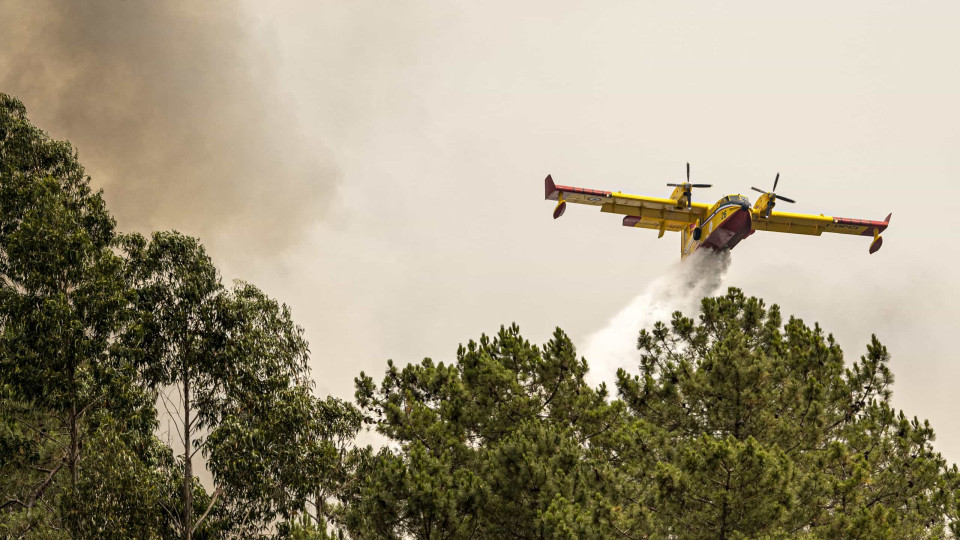Fuel load management in more than 142,000 ha since 2018
The reduction in fuel load to prevent rural fires, between 2018 and 2023, led to the intervention in 142,130 hectares and 12,292 kilometres of forest road network, the Institute for Nature Conservation and Forests (ICNF) told Lusa.

© Getty

País ICNF
In a note, the ICNF reported having ensured "fuel management in strategic locations in more than 142 thousand hectares and intervened in more than 12 thousand kilometers of forest roads that improve access to the forest for normal management and prevention work, as well as allow better access to forces engaged in suppressing rural fires".
The reduction of fuel load at landscape level, between 2018 and 2023, covered 33,171 hectares (ha) of the primary network and fuel break strips, 68,338 ha of fuel management mosaics, 17,445 ha of silvopastoralism, 7,018 ha of pilot projects in protected areas, 16,158 ha of controlled fire and burning and 12,292 kilometers of forest road network.
Contacted by Lusa, AGIF - Agency for Integrated Management of Rural Fires noted that "the levels of interventions in the area, namely through mosaics, grazing and controlled fire, continue to remain below the targets set out in the National Action Program [PNA] (-75%)".
In this sense, it is urgent to strengthen measures that "stimulate private involvement and consequent investment in forestry measures, good management after forest exploration, good recovery after fire and/or grazing and rational use of fire in mosaics with scale", recommendation of the annual report of the Integrated Management System of Rural Fires (SGIFR) of 2022.
The 2023 document will be delivered to the Government soon.
"The lack of information on the intervention of private individuals, mainly beneficiaries of funding for investment and management, remains absent", for example, from the Rural Development Program (RDP), stressed the agency chaired by Tiago Oliveira.
In response to Lusa, the ICNF announced that the SOS Ambiente hotline, to support doubts and questions related to land clearing and rural fire management, "exceeded 110,000 calls" answered in 2023.
The burning platform, created to support farmers, forest producers and landowners who intend to use fire to eliminate the leftovers from their cleaning, which allows communication or the request for authorization to local authorities, processed in 2023 "more than 1,165,000 requests", it is mentioned in the note.
In addition to national and regional awareness campaigns, through the media, within the scope of the "Portugal Chama" campaign, in close coordination with AGIF and other entities of the system, namely the National Emergency and Civil Protection Authority (ANEPC) and the GNR, the ICNF has supported the constitution and operation of forest firefighting teams, owned by forest producer organizations, common land management bodies and local authorities, "in the annual amount of around 20 million euros".
These teams carry out "cleaning actions at the level of communities and local infrastructures" and, within the scope of the Environmental Fund, the Village Condominiums and silvopastoral support programs are underway, as well as the support mechanism for carrying out pastoral burning (ICNF).
Within the scope of the SGIFR, ANEPC supports the management of secondary strips (around houses) and other fuel management actions in rural territories, in coordination with the municipalities, while the GNR ensures the verification of compliance with fuel management obligations.
According to data from Operation Floresta Segura, regarding monitoring and inspection actions within the scope of land clearing, the GNR reported, in March, that 9,367 parishes were monitored, 95,662 signs were made, 25,336 minutes of contravention were drawn up since 2019, and a "voluntary non-compliance rate of land clearing by the population above 50%".
According to AGIF, within the scope of the program, "an increase of 12 clusters involved (+0.5%) was observed, going from 2,230 in 2022 to 2,242 in 2023", numbers that, however, remain "substantially below the ambition set out in PNA (7,000 villages in 2030), so it is critical to strengthen this program and increase the number of participating municipalities".
The program, according to ANEPC, currently has 2,254 clusters involved, 2,104 designated security officers, 948 evacuation plans, 2,916 identified shelter and refuge sites and 465 simulations carried out.
Read Also: Forestry companies association says strategy should be rethought (Portuguese version)


Descarregue a nossa App gratuita.
Oitavo ano consecutivo Escolha do Consumidor para Imprensa Online e eleito o produto do ano 2024.
* Estudo da e Netsonda, nov. e dez. 2023 produtodoano- pt.com






